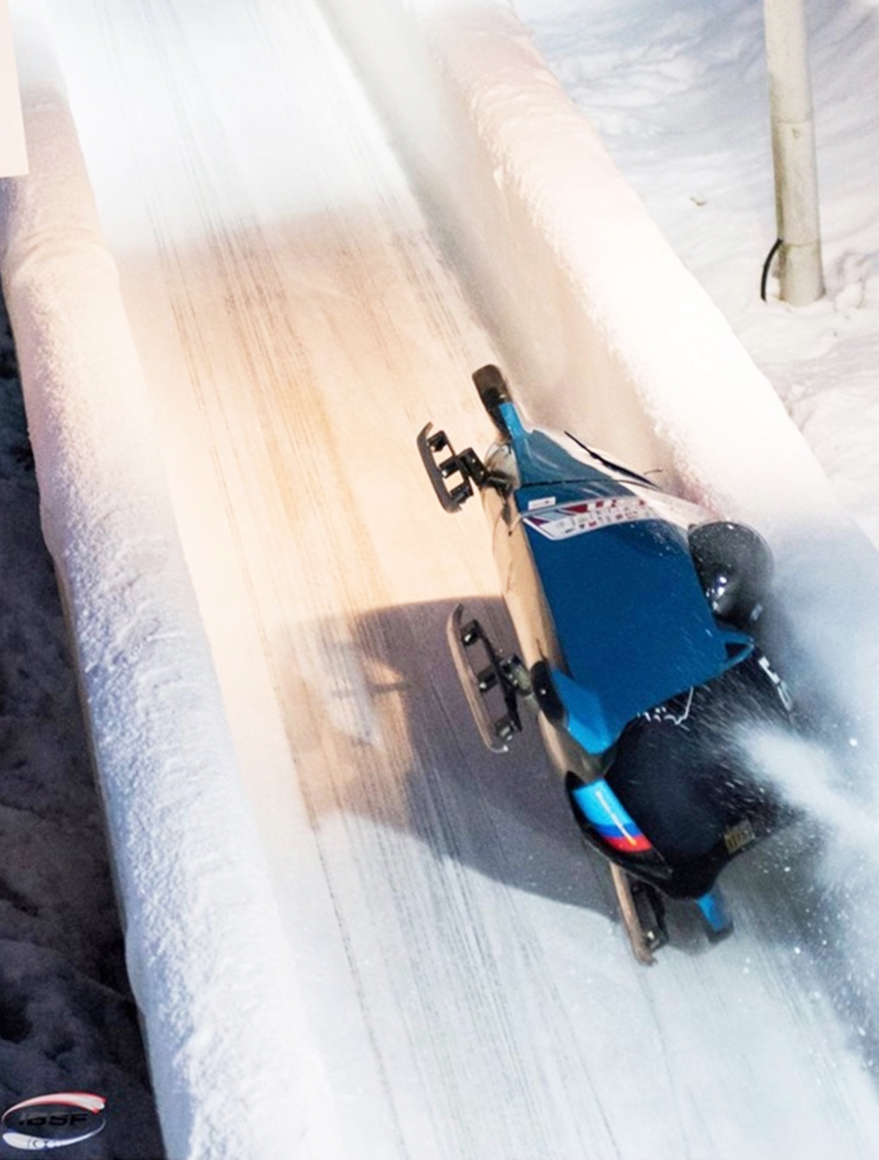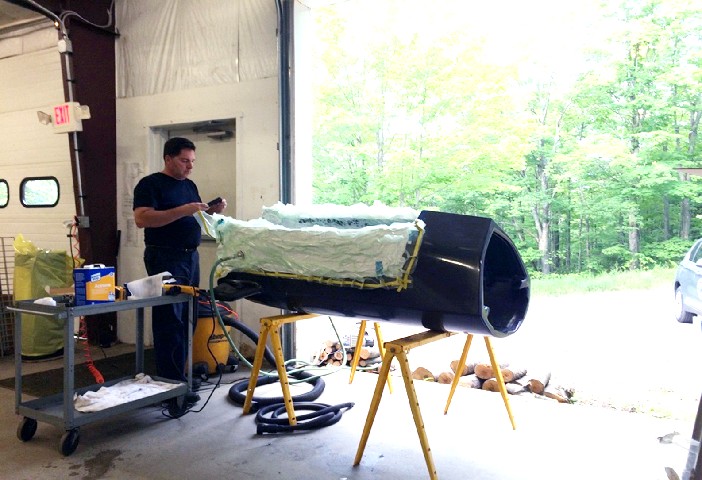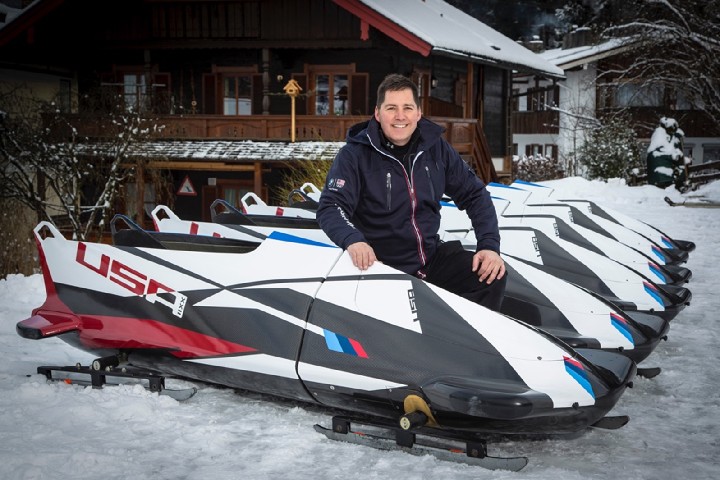
By Richard Laubenstein
USA Bobsled/Skeleton’s Crew Chief, Richard Laubenstein, constantly works toward one main goal: to design and maintain the fastest, most aerodynamic bobsleds for Team USA’s athletes. Bobsleds are high-performance machines powered by people. Athletes push the sled in a sprinting start to gain speed, then jump in to continue down the icy track at speeds exceeding 95 mph.
There are currently 16 bobsled tracks in the world. The International Bobsled and Skeleton Federation World Cup tour competes on nine of those tracks. While the tracks are all different in shape, they are approximately one mile long with straightaways and sharp, high-banked turns. One bad bump or turn can be disastrous.
Team USA’s sleds were previously made of fiberglass. The latest USA sled cowlings (body) are made of carbon fiber because the material is structurally sound and lightweight. This allows the team to move their weight within the sled for a performance advantage. Hans DeBot’s team at DeBotech in Mooresville, NC builds all of USA Bobsled/Skeleton team’s 2-man, 4-man, and skeleton cowlings.

In a sport that can take a turn for the worse with one small mistake, the team needs to be prepared to make many repairs on the road. There is no bobsled store to run to for new parts, especially since Team USA has their own unique design that is not shared with any other countries. Laubenstein, whose background includes working on Indy cars, must make do with the limited resources that the team travels with on tour. Since they spend a great deal of time in Europe, they must be as self-sufficient as possible.
There are many challenges that come with working on the road. One is the dark, cold parking garages that become makeshift shops where the sleds are stored after training. These garages also double as a gym since the team travels with free weights. Another challenge is dealing with limited equipment and supplies on the road as well as different electrical voltages. In these less-than-ideal conditions, the repair philosophy is “whatever it takes.”
The team’s go-to for bobsled repairs is WEST SYSTEM 105 Resin with 205 Fast Hardener and whichever filler is best for the situation at hand, usually 404 High-Density. At a race in LaPlange, France, the temperature in the garage was below 32°F so they had to disassemble the cowling of the sled from the frame and take it into the hotel lobby to use the epoxy.

Back in Lake Placid, NY, where the US team has a complete shop, a vacuum bag system is used for optimum performance. This makes the repair as strong as new. Gearing up for the season ahead, Team USA uses WEST SYSTEM 105 Resin, but this time with 206 Slow Hardener.
WEST SYSTEM has been extremely helpful to the USA team with all of its repairs such as laminating and bonding. Because this epoxy is versatile and easy to use, it has become their go-to product on the road.





